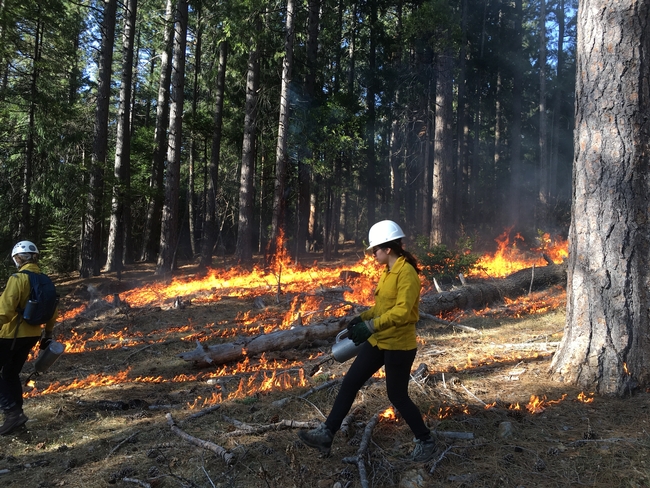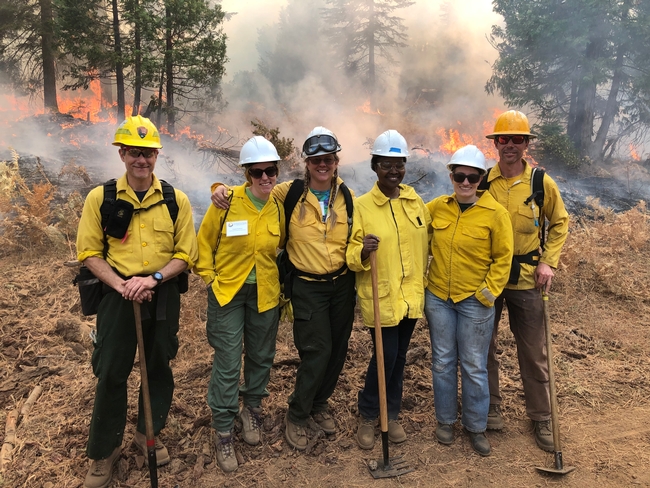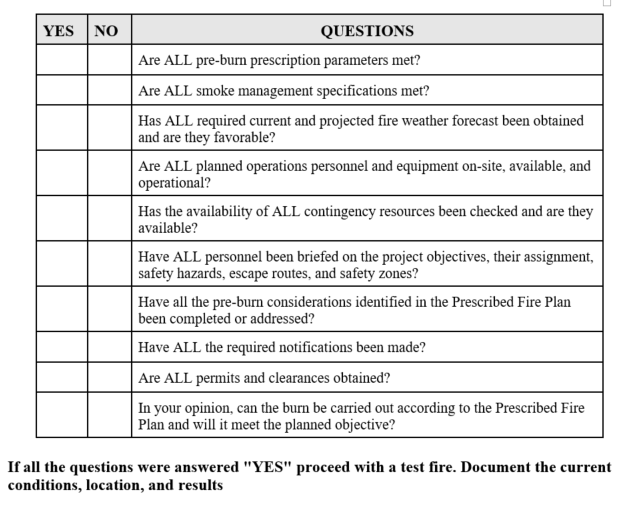Private forest landowners in California are increasingly interested in using prescribed fire for vegetation management. When properly done, prescribed fire can be used effectively in many different vegetation types, at different times of the year and under different weather conditions. Depending on landowner objectives, it can also be less expensive than other traditional vegetation management practices. However, before one starts a burn, there are several logistical matters that must be taken into consideration, and a Prescribed Fire Go/No Go Checklist can make sure critical pieces are not overlooked.

Rob York, UC Cooperative Extension Forestry Specialist at UC Berkeley, Department of Environmental Science, Policy and Management, has been implementing and studying the effectiveness of prescribed fire at Blodgett Forest Research Station for many years. Based on his experience, he developed a Prescribed Fire Go/No Go Checklist to ensure the operation runs smoothly.
Plans and checklists are good for everyone, but they can be different for everyone depending on their circumstances. - Rob York
Have a plan. Landowners should always start out with a plan, although the length and detail can vary greatly. Whether you are required to have a burn plan or not, having one helps to document your due-diligence as a landowner. Iowa State University Extension's “Developing a Prescribed Fire Burn Plan: Elements & Considerations” describes the purpose of a burn plan as having to ‘provide a description of the burn area, target weather conditions, hazards that may be encountered, personnel needs and safety, and contacts to make prior to burning. The plan should also describe the goals and objectives of the burn, the actual fire prescription (the minimum/desired/maximum acceptable burning conditions, including temperature, relative humidity, wind speed and direction, and fine fuel moisture), fire operation, control and cleanup.' Include a map of your land with the area targeted for burning and natural or man-made firebreaks clearly outlined. Depending on the complexity of the burn, the plan maybe be simply described or quite detailed. For small scale burns, the number of people involved and equipment needed can be minimal. Remember, every prescribed fire is different. A landowner may need to re-evaluate their burn plan as objectives or fuel and site conditions change. Once burning on your own land becomes fairly routine for you, you could have a plan that is as simple as a one page outline.
With a plan in place, a landowner then needs to consider additional site specifics. Clearly articulate the work that needs to be done, if any, ahead of time to maximize the efficiency and effectiveness of a safely conducted burn, and what needs to be done to minimize any potential hazards. Consider fire line construction, pre-treatment of vegetation in sensitive areas, access in and out of the burn unit, and access to water.
Depending on the time of year and local regulations, a landowner must also take into account required permits. Smoke management plans are dependent on the requirements of your specific Air Quality District and may be submitted into the Prescribed Fire Incident Reporting System (PFIRS) if the burn is large enough. For some districts, burns have to be greater than 10 acres to require a smoke management plan. These plans can be done with basic information about the type of vegetation you are burning and the proximity of your burn to smoke sensitive areas. Smaller burns often require much less detail. In most mountainous areas of northern California, Cal Fire requires a permit if a landowner is conducting prescribed burns during the declared fire season (generally May 1 through the end of October or early November). Outside of the declared fire season, a landowner does not need a permit from Cal Fire but may notify their local Cal Fire unit before starting as a courtesy.
Notifications. A Prescribed Fire Best Management Practice includes notifying your neighbors and local fire agency of both your intent to burn and when you start burning.
Safety first! Be prepared for emergencies. Accessible water, escape routes, medical plans, reliable communications… all of these things need to be considered and planned for, whether you are doing prescribed fire or any other forest management activity. Better to be prepared than caught off guard!
Go/No Go Checklist. Are you ready to proceed?
With a well thought out burn plan and utilizing a Go/NoGo Checklist, private forest landowners can have more confidence in their ability to implement prescribed fire and make progress towards reaching their forest management goals and objectives.

For more information on prescribed fire, burn plans and go/no go checklists, go to:
Before You Burn, Cal Fire
Fire in California, UC Agriculture & Natural Resources
Rx Burn Plans, Rob York, CE Specialist, UC Berkeley
